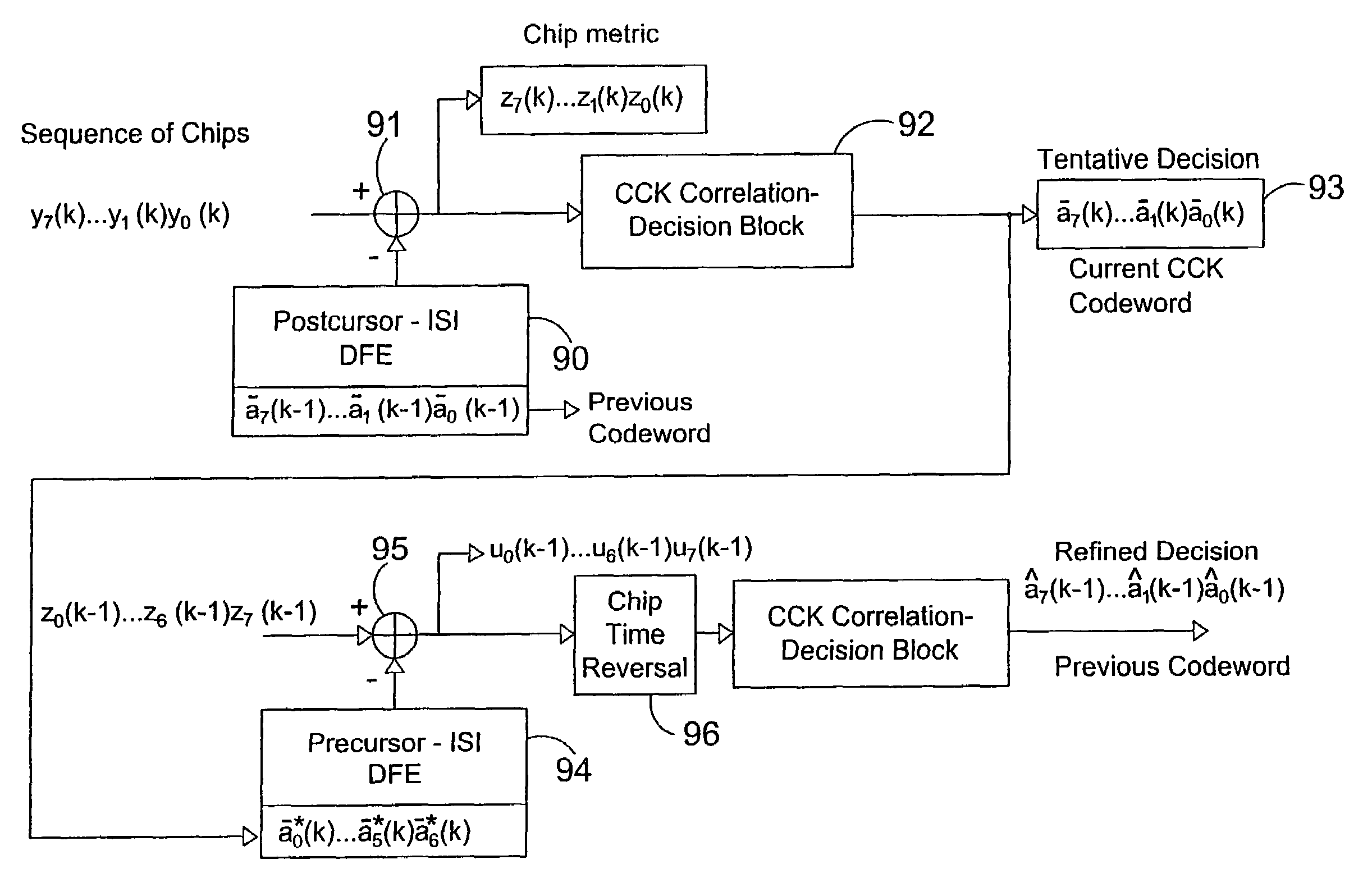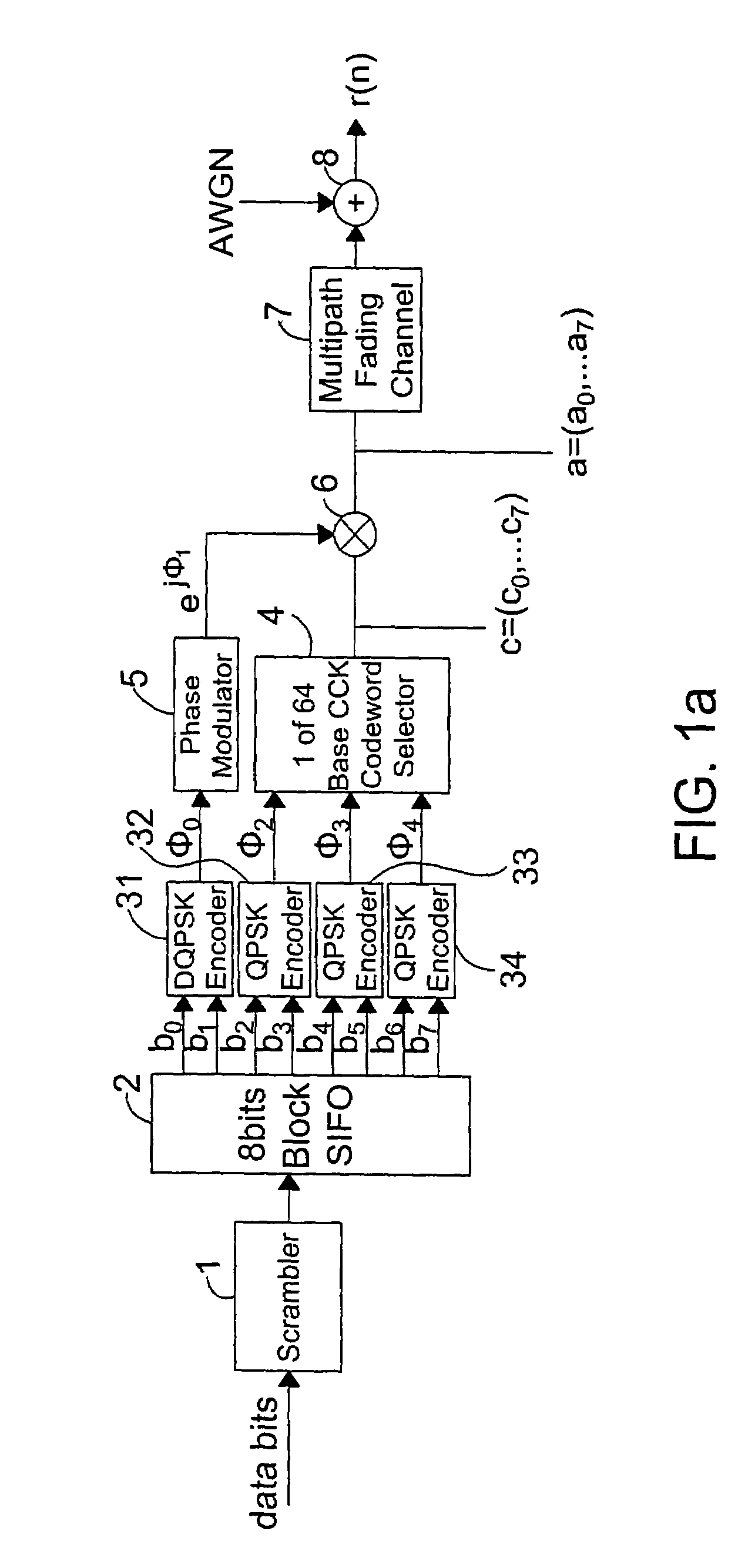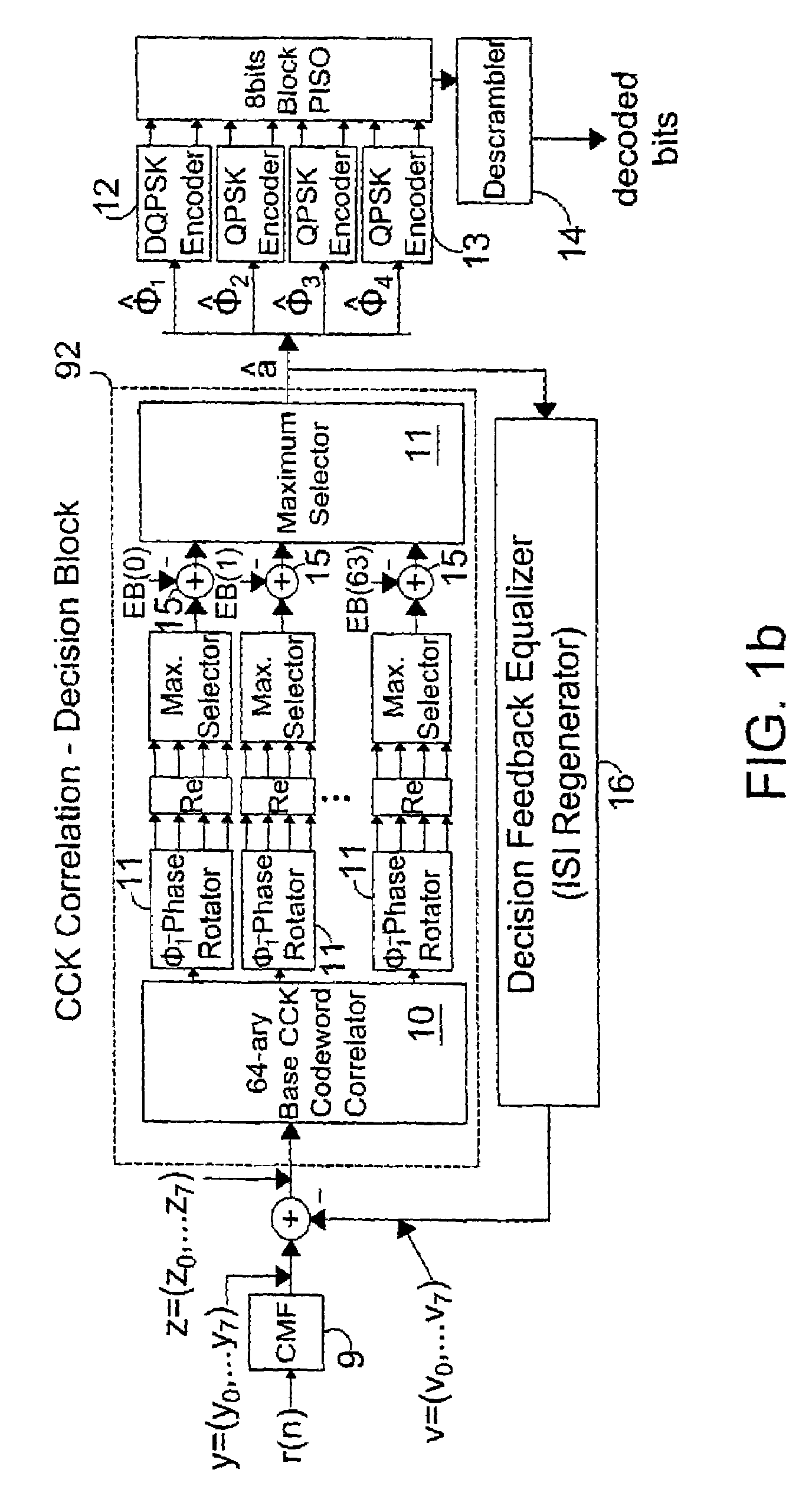Bidirectional turbo ISI canceller-based DSSS receiver for high-speed wireless LAN
- Summary
- Abstract
- Description
- Claims
- Application Information
AI Technical Summary
Benefits of technology
Problems solved by technology
Method used
Image
Examples
Embodiment Construction
[0030]FIGS. 1(a) and 1(b) are block diagrams of a DSSS / CCK communication system which, for example, may be employed in an IEEE 802.11 b wireless LAN. As shown in FIG. 1(a), source bits in a data packet are first scrambled by a scrambler 1 and grouped into the kth 8-bit block 2 (b(k)={b0(k), b1(k), . . . b7(k)}) at time k(k=0,1, . . . , K−1). Then, the first bit pair (b0(k), b1(k)) is mapped to a differentially encoded phase angle φ1(k) based on a DQPSK encoder 31 and the other bit pairs (b2(k), b3(k)), (b4(k), b5(k)), and (b6(k), b7(k)) are respectively mapped to φ2(k), φ3(k), and φ4 based on a natural QPSK encoding in encoders 32, 33, and 34. Note that each of the four angles can take a value in the set of {0, π / 2, π, 3π / 2}. Among the four angles, the naturally encoded angles φ2(k), φ3, and φ4 are used to generate one of 64 base CCK codewords c(k)=(c0(k), c1(k), . . . , c7(k)) in selector 4 according to the following equation:
c(k)=(ej(φ2(k)+φ3(k)+φ4(k)),ej(φ3(k)+φ4(k)),ej(φ2(k)+φ4(...
PUM
 Login to View More
Login to View More Abstract
Description
Claims
Application Information
 Login to View More
Login to View More - R&D
- Intellectual Property
- Life Sciences
- Materials
- Tech Scout
- Unparalleled Data Quality
- Higher Quality Content
- 60% Fewer Hallucinations
Browse by: Latest US Patents, China's latest patents, Technical Efficacy Thesaurus, Application Domain, Technology Topic, Popular Technical Reports.
© 2025 PatSnap. All rights reserved.Legal|Privacy policy|Modern Slavery Act Transparency Statement|Sitemap|About US| Contact US: help@patsnap.com



